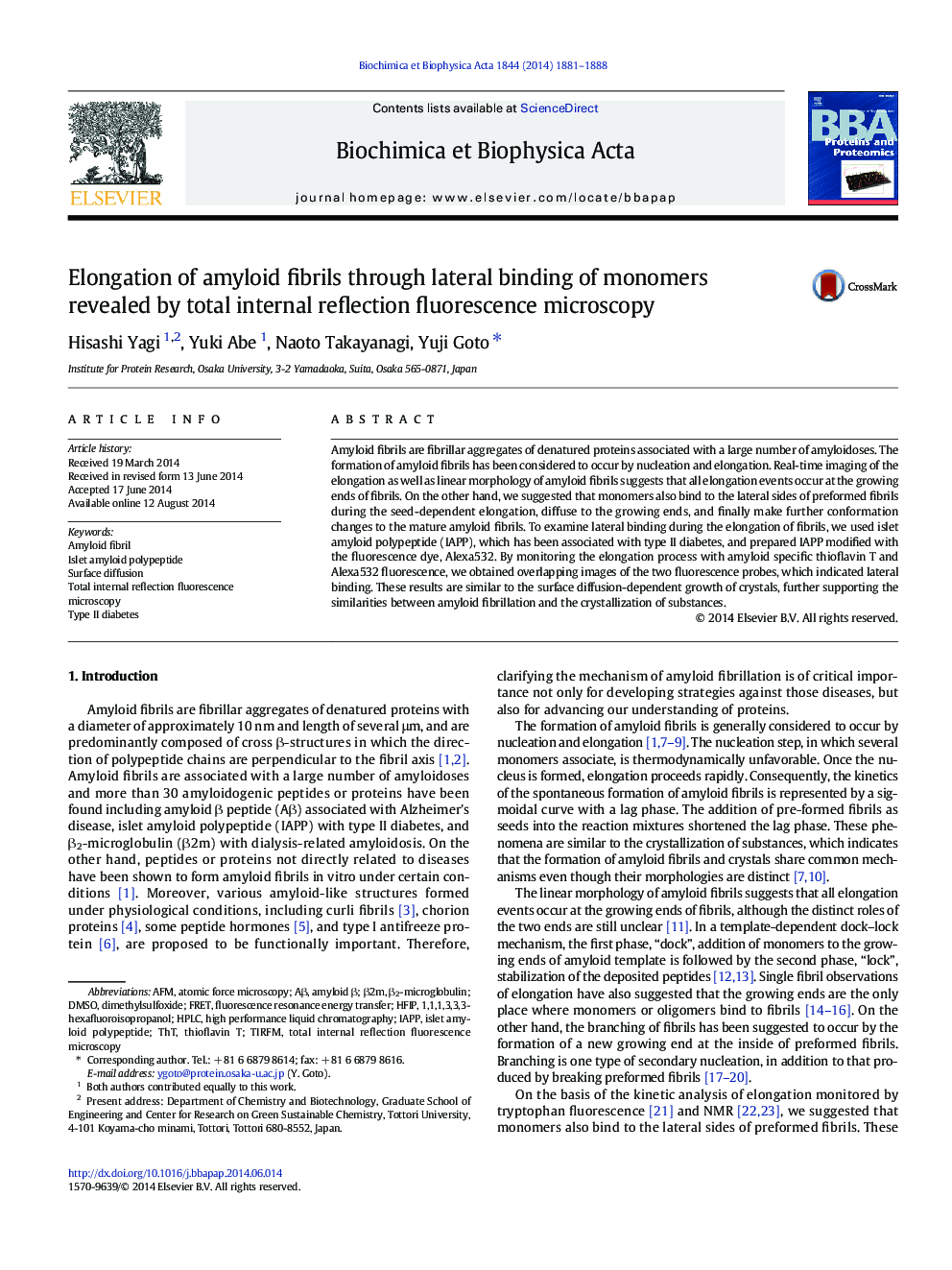| کد مقاله | کد نشریه | سال انتشار | مقاله انگلیسی | نسخه تمام متن |
|---|---|---|---|---|
| 1177850 | 962625 | 2014 | 8 صفحه PDF | دانلود رایگان |
• TIRFM is useful for visualizing fibril elongation.
• Binding of monomers to the lateral sides is an important step in the fibril elongation.
• The surface diffusion common to crystallization is also valid for the fibrillation.
Amyloid fibrils are fibrillar aggregates of denatured proteins associated with a large number of amyloidoses. The formation of amyloid fibrils has been considered to occur by nucleation and elongation. Real-time imaging of the elongation as well as linear morphology of amyloid fibrils suggests that all elongation events occur at the growing ends of fibrils. On the other hand, we suggested that monomers also bind to the lateral sides of preformed fibrils during the seed-dependent elongation, diffuse to the growing ends, and finally make further conformation changes to the mature amyloid fibrils. To examine lateral binding during the elongation of fibrils, we used islet amyloid polypeptide (IAPP), which has been associated with type II diabetes, and prepared IAPP modified with the fluorescence dye, Alexa532. By monitoring the elongation process with amyloid specific thioflavin T and Alexa532 fluorescence, we obtained overlapping images of the two fluorescence probes, which indicated lateral binding. These results are similar to the surface diffusion-dependent growth of crystals, further supporting the similarities between amyloid fibrillation and the crystallization of substances.
Journal: Biochimica et Biophysica Acta (BBA) - Proteins and Proteomics - Volume 1844, Issue 10, October 2014, Pages 1881–1888
